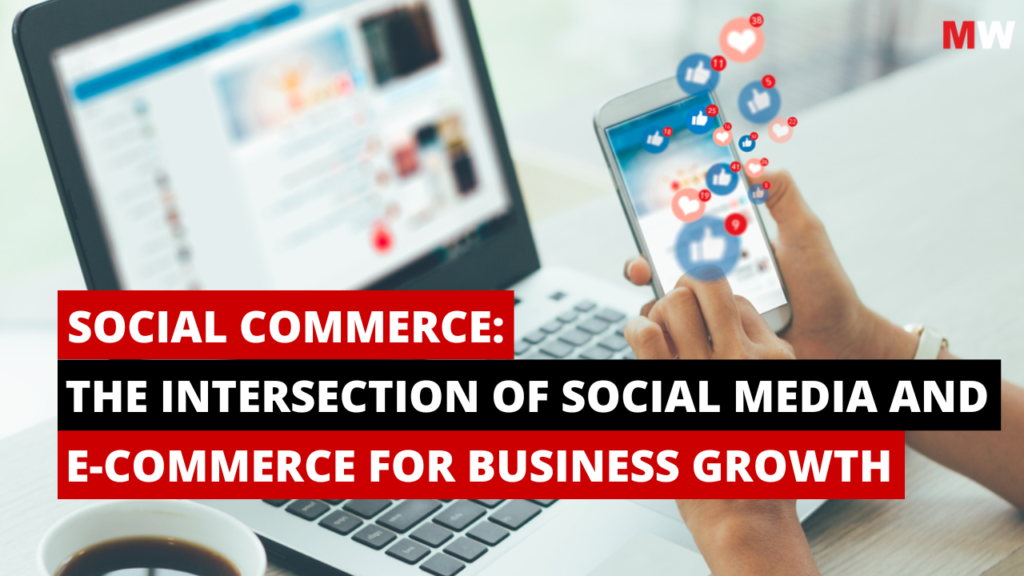In today’s digital landscape, social networking and e-commerce converge to form an innovative approach known as social commerce. This phenomenon harnesses the vast reach of social platforms alongside the convenience of online shopping, creating a powerful synergy that businesses are leveraging for remarkable growth. This article explores the dynamic world of social commerce, revealing how it’s reshaping the business landscape and unlocking new avenues for expansion.
What is Social Commerce?
Social commerce transcends the mere integration of social media and e-commerce; it encompasses the entire customer journey—from product discovery on social platforms to a seamless checkout experience. Unlike traditional e-commerce, which often directs customers away from social media to make purchases, social commerce allows users to shop within the platform, creating a frictionless shopping experience. This convenience enhances customer satisfaction and encourages repeat purchases.

The Evolution of E-Commerce
The roots of social commerce trace back to social networking sites, which initially served as platforms for social interaction before expanding into commerce. Facebook’s Marketplace, launched in 2007, was a pioneer, allowing users to buy and sell goods within their networks. The introduction of the purchase button in 2014 and the subsequent launch of Marketplace in 2018 marked significant milestones in this evolution. As e-commerce grew, businesses needed innovative strategies to differentiate themselves in a crowded online marketplace, leading to the integration of social media elements.
The Rise of Social Media
Social media platforms like Instagram and Facebook have become integral to daily life for millions of users. They serve not only as communication tools but also as vibrant marketplaces where consumers discover and purchase new products. The immense reach of these platforms provides businesses with unprecedented opportunities to engage with potential customers. With billions of users worldwide, the potential for exposure is vast, making social commerce an essential component of modern marketing strategies.

Defining Social Commerce
Social commerce represents the seamless fusion of social media and e-commerce, creating an ecosystem where businesses showcase products directly within social platforms. Through features like interactive posts and in-app checkout options, this model removes many barriers between product discovery and purchase, transforming how brands connect with consumers.
Benefits of Social Commerce
- Enhanced Customer Engagement: Social commerce elevates shopping from a mere transaction to an engaging journey. Customers can provide instant feedback, ask questions, and share their experiences with their social networks, fostering a sense of community around the brand. This engagement is not just anecdotal; in fact, 87% of sellers affirm that social selling has proven effective for their business, according to HubSpot’s Social Selling Stats. Such real-time interactions nurture a deeper connection between brands and consumers, ultimately leading to increased loyalty and repeat purchases.
- Personalization and Targeting: Social media platforms collect vast amounts of user data, allowing businesses to tailor product recommendations and advertisements to specific demographics. This level of personalization enhances the customer experience and boosts conversion rates.
- Expanded Brand Reach: Social commerce enables businesses to tap into new audiences through features like hashtags and user-generated content. By encouraging customers to share their experiences, brands can organically expand their reach beyond their immediate followers.
Implementing Successful Social Commerce Strategies
Seamless Shopping Experience
A successful social commerce strategy hinges on providing a seamless shopping experience.

Businesses must ensure that the transition from product discovery to checkout is intuitive and frictionless, creating a sense of continuity for the customer. Utilizing tools like Privy can enhance this experience by optimizing the checkout process and integrating marketing efforts, ensuring customers can easily navigate from browsing to buying.
Influencer Collaborations
Collaborating with influencers can significantly amplify brand exposure and credibility. These partnerships leverage the influencer’s reach to drive engagement and sales, making them a valuable asset in social commerce strategies.

User-Generated Content
Encouraging customers to share their experiences creates authentic content that resonates with potential buyers. This type of social proof builds trust and acts as a powerful form of word-of-mouth marketing.
Challenges and Solutions
- Building Trust and Credibility: Without physical storefronts, establishing trust online is crucial. Businesses must invest in transparent communication, customer reviews, and reliable payment gateways to reassure customers.
- Data Security and Privacy Concerns: Handling sensitive customer information requires stringent security measures. Clear privacy policies and compliance with data protection regulations are essential to mitigate risks and build consumer trust.
Real-World Examples of Social Commerce
Instagram’s Shoppable Posts
Instagram’s integration of shoppable posts allows businesses to tag products directly in their posts, enabling users to make purchases without leaving the app. This seamless experience blurs the lines between browsing and buying, driving higher conversion rates.

Facebook Marketplace
Facebook Marketplace facilitates peer-to-peer buying and selling within the platform, leveraging its vast user base to create a bustling digital marketplace for consumers.

Future Trends in Social Commerce
Augmented Reality Shopping
AR technology enables customers to visualize products in real-world settings before purchasing. Brands like IKEA and Sephora are already using AR to enhance the shopping experience and boost customer confidence in their buying decisions.

Video Commerce
The growing popularity of video content on social media platforms presents new opportunities for businesses. According to the Wyzowl Video Marketing Statistics for 2024, 82% of consumers say they’ve been convinced to buy a product after watching a brand’s video. Brands can utilize live shopping events and product demonstration videos to engage customers and drive conversions.

Advanced Analytics
As social commerce continues to evolve, advanced analytics tools will provide businesses with deeper insights into customer behavior, allowing for more effective strategy adjustments.
Measuring Social Commerce Success
- Key Performance Metrics: Businesses should track metrics such as conversion rates, click-through rates, and social engagement to assess the effectiveness of their social commerce efforts.
- Calculating ROI: Understanding the return on investment (ROI) helps businesses gauge the value generated by their social commerce initiatives. This includes factors like increased revenue, improved brand visibility, and enhanced customer retention.
The Global Impact of Social Commerce
Social commerce transcends geographical boundaries, empowering small businesses to compete on a global scale. Platforms like Shopify are increasingly integrating social commerce features to help businesses thrive in the digital marketplace, offering consumers access to a diverse array of products worldwide.
Social commerce is a dynamic thread that interweaves social networking and e-commerce, reflecting the broader trends of digital transformation. As social media platforms expand their roles as vital commerce channels, businesses can tap into their vast user bases to drive sales and foster personalized interactions with customers. As we look to the future, social commerce is poised for continued growth, offering innovative solutions and opportunities for brands willing to adapt and evolve.








